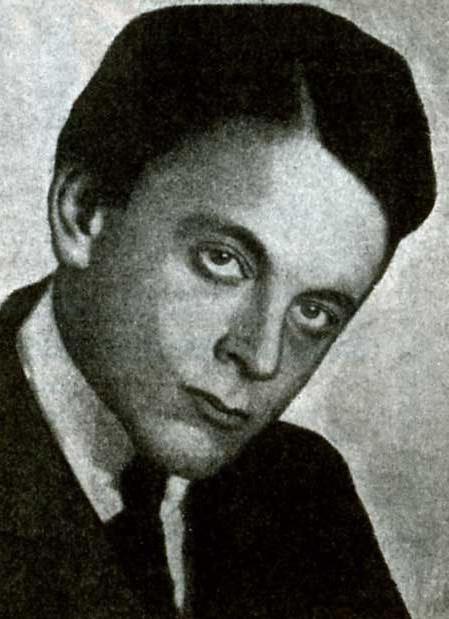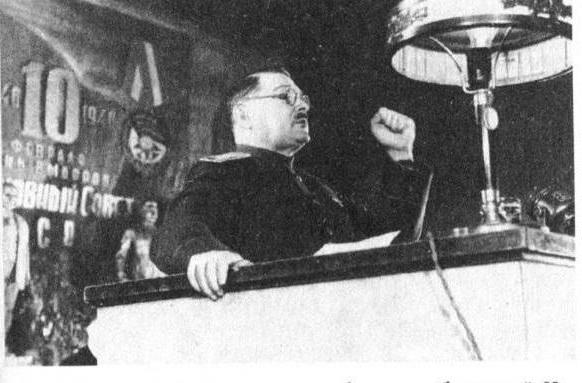After the October and February revolutions, which unfolded a vast country in the completely opposite direction, Russia began to flourish in all forms of modernism in art. The literary group “The Serapion Brothers” did not last long, however, left a noticeable mark in the history of literature and in the personal life of each of its participants. The stigma of “serapion” remained with them until the end of days. In the early 1920s, it was one of the most famous literary associations, such writers as Mikhail Zoshchenko, Veniamin Kaverin, Lev Lunts, Vsevolod Ivanov, Mikhail Slonimsky came out of its ranks. Flaring up on the horizon of young Soviet prose and quickly burned out, the Serapion Brothers managed to nevertheless illuminate new paths for many other writers.
Background
In 1919, the World Literature Publishing House established the Studio of Fiction Translation. However, soon the meetings of young people who came to master this art began to have a more comprehensive character. Talk about literature, the skill of the writer and the essence of art was the main content of the collections. Soon they were transformed into a literary studio. The initiator of her organization was N. Gumilyov, and K. Chukovsky took over the leadership. Andrei Bely, N. Zamyatin, K. Chukovsky, N. Gumilyov, V. Shklovsky held seminars at meetings and lectured. The number of followers expanded and by 1920 amounted to 350 people. The writers, who became cramped within the framework of this studio, separated and created the Serapion Brothers group. The members of this association insisted that they were not a literary school, but only a community of critics, prose writers and poets, connected by common views on the content of art.
Poetics of the name of a literary association
If it were not for the book of short stories “The Serapion Brothers” (Hoffmann), which had been lying on the publisher’s table for a long time, the name of the community of young writers could have been different. However, it turned out to be consonant with the main principle of the group. Hoffmann's book, containing 22 stories, tells of a group of friends who met after a long separation. One of them talks about his meeting with a mad count who is confident in the illusory nature of the surrounding reality. The rejection of reality, the departure into the world of free creativity, which constitute the main idea of this work, perfectly characterized the aspirations of young writers.
Who are the writers? The Serapion Brothers: Composition
Almost immediately after the creation, the admission to the literary group of new members ceased. The first - and the last composition of the participants was immortalized in a photograph of 1921. It captures Leo Lunts, Nikolai Nikitin, Mikhail Slonimsky, Ilya Gruzdev, Konstantin Fedin, Vsevolod Ivanov, Mikhail Zoshchenko, Veniamin Kaverin, Elizaveta Polonskaya, Nikolai Tikhonov. In approximately this order, they were accepted into the group. Some scholars included Viktor Shklovsky among the participants, although he himself considered his work to be beyond the jurisdiction of any associations.
The content of the meetings of the serapions
The literary group "Serapion Brothers" chose Slonimsky's room as the place of their meetings. His image even became the emblem of the group. Literary scholars agree that the meetings took place on Saturdays, although in reality like-minded people could meet on another day of the week. At the meetings, the works of the group members were read, which were then discussed in detail and exactingly. Writers argued about art, considered new ways of developing literature. One can guess that the discussions were heated and emotional.
Almanac exit
The only joint collection of serapions was released in 1922. He came out in Russia, and then in Berlin, supplemented by an article by I. Gruzdev “Face and Masks”. Even before the release of the almanac, the works of the members of the Serapion Brothers group were well known in literary circles. Among the fans of their work was M. Gorky, as can be seen from his correspondence with Shklovsky. He was keenly interested in the release of new works and gave them very high marks.
Y. Tynyanov was much more restrained. In his article “The Serapion Brothers. Almanac I ”, he characterizes the collection as an unsteady first step, where there are not quite complete stories (and those made are not always better). The champion of "excellent clarity" M. Kuzmin even disapproved of this almanac, writing that the stories of the serapions of 1920 in 1922 were already outdated.
Brothers Nicknames
At first, the meetings of the Serapion Brothers strongly resembled the meetings of the Arzamas Society of Unknown People, which brought together writers of the Pushkin circle. The idea of comic nicknames that remained with the writers for the rest of their lives was taken from there. Some of them are mentioned by V. Pozner in a letter to A. M. Remizov. I. Gruzdev received the nickname "Father Superior", N. Nikitin - "Brother Canon", L. Lunts - "Brother-buffoon", V. Pozner - "Young Brother", V. Shklovsky - "Brother-brawler." Zamyatin, Zoshchenko and N. Chukovsky remained without a nickname. Often A. Akhmatova, B. Annenkov, I. Odoevtseva and others came to meetings. They also participated in discussions and disputes, although they were not part of the group. In addition, there was the “Institute of Serapion Girls”, which included M. Alonkina, L. Sazonova, Z. Gatskevich (later Nikitin’s wife), I. Kaplan-Ingel (later Slonimsky’s wife).
Leo Lunts and The Serapion Brothers
The young 20-year-old Lev Lunts became the unspoken leader of the group. Intelligent, always lively, incredibly talented - in the first meetings of the serapions he was the one who “warmed up” his colleagues. Lunts lived only 23 years, but managed to leave a noticeable mark on the souls of writers. The obituary of Lunts was written by M. Gorky, N. Berberova, Yu. Tynyanov, K. Fedin. He was called the “youth faun”, the energy splashing over the edge of this guy filled all the meetings of the group called “The Serapion Brothers”. The literary association chose him as its ideological leader. They even wanted to devote a whole collection to the young man, however, they did not manage to do this.

Towards the end of the 1920s, Lunts's work received an indelible mark as deeply anti-Soviet and reactionary, and was no longer printed. The reason for this attitude can be understood if you look at the article by Lunts “Why are we“ Serapion Brothers ”, which became the manifesto of the group. In it, he proclaims the principles of freedom of creativity, life without a charter and regulation.
The fate of the union
For the Soviet state, the existence of an independent group of writers was very undesirable. In 1922, the autobiographical essays of the serapions appeared in the journal Literary Notes. After that, a whole campaign began to separate writers, led by Lunacharsky and Trotsky. The task was clearly set: to subordinate the group to their will. Those who agreed to cooperate with the authorities were promised that their works would be published. For the Soviet writer, this was already a huge success. Some of the serapions joined the Krug artel, which existed with party money.

Gradually, the meetings became less and less. The group was not officially dissolved, friendly relations between its members were maintained throughout life. However, Zoshcheko did not come to the anniversary evening in 1926. Until 1929, the Serapion Brothers association was still smoldering in the literary milieu. With the advent of the Writers' Union, the existence of any independent association, in general, became impossible.
Despite its short history, the Serapion Brothers group was of great importance for Russian literature of the 20th century. A number of remarkable writers came out of her midst, and how noticeable a trace she left was evidenced by the fact that in 1946 its members were again mentioned in the famous decree of Zhdanov. So, many years after the collapse, the Soviet punitive hand took out rebellious writers, bringing down a series of prohibitive sanctions on Zoshchenko, Tikhonov and Slonimsky.